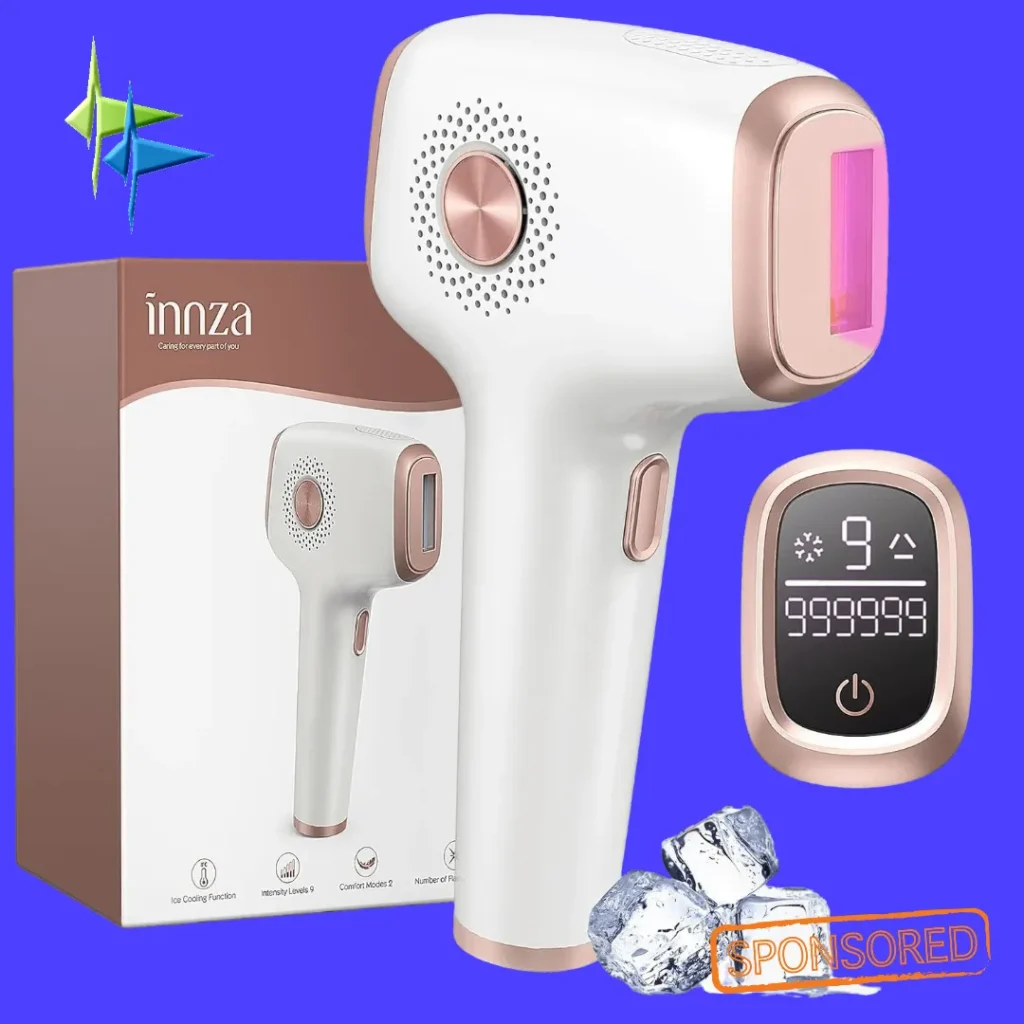Laser Hair Removal System
Imagine waking up every morning without the hassle of shaving, the sting of waxing, or the monotony of plucking.
For many, this is not just a dream but a reality made possible by advancements in modern technology.
Enter the world of laser hair removal systems—where science meets skincare to offer a long-term solution for unwanted hair.
Whether you’re tired of dealing with ingrown hairs or simply want to enjoy smooth skin without constant upkeep, understanding how these systems work can be life-changing.
In this article, we will delve into the fascinating mechanics behind laser hair removal systems and explore their effectiveness for different skin and hair types.
From discussing the technology that makes it all possible to providing insights on what to expect during treatment sessions, we aim to equip you with comprehensive knowledge on this revolutionary approach to personal grooming.
So sit back, relax, and get ready to discover how you can simplify your beauty routine with cutting-edge laser technology.
Technology Behind Laser Hair Removal Systems
At the heart of laser hair removal systems lies advanced light technology.
These systems utilize intense pulsed light (IPL) or laser beams to target and eliminate hair follicles, inhibiting future hair growth.
The selected light wavelength is absorbed by the pigment in the hair, converting into heat and damaging the follicles.
This process, known as selective photothermolysis, allows for precise targeting of unwanted hair while minimizing damage to the surrounding skin.
Different systems may use varying technologies, such as diode lasers or alexandrite lasers, but the basic principle remains the same.
By focusing the energy onto the hair follicles, laser hair removal systems provide a safe and efficient method for long-lasting hair reduction.
Table of Contents Laser Hair Removal System
Effectiveness for Different Skin and Hair Types
While laser hair removal systems have proven to be highly effective for many individuals, the extent of effectiveness may vary depending on skin and hair types.
The ideal candidate for laser hair removal has dark hair and light skin since the contrast allows for better absorption of the light by the hair follicles while minimizing damage to the skin.
However, advancements in technology have expanded the possibilities for individuals with different skin tones and hair colors.
Systems with adjustable settings can be customized to accommodate a wider range of individuals, including those with darker skin tones and lighter hair colors.
For individuals with darker skin, laser hair removal systems that utilize longer wavelengths may be used to bypass melanin in the skin and target the hair follicles more effectively.
Additionally, systems with larger spot sizes or cooling mechanisms can help protect the skin and reduce the risk of complications.
Laser Hair Removal Devices
Laser hair removal devices come in various forms, including handheld devices for home use and larger machines used in professional settings.
Home devices are often equipped with safety features and lower power levels to ensure user-friendly and safe treatment.
These devices are suitable for smaller treatment areas and are more budget-friendly for individuals seeking convenience and long-term hair reduction in the comfort of their own homes.
On the other hand, professional devices used in clinics and medspas are equipped with more advanced features and higher power levels.
These devices are designed to treat larger areas efficiently and effectively, making them ideal for individuals who require extensive hair removal or have specific treatment needs.
Choosing the right device depends on individual preferences, budget, and treatment requirements.
It is important to consult with a qualified professional or dermatologist to determine the most suitable option for your specific skin and hair type.
Laser hair removal has become an increasingly popular method for achieving long-lasting hair reduction.
While there are various methods and devices available in the market, it is crucial to choose the right laser hair removal system for optimal results.
When it comes to laser hair removal devices, there are several factors to consider.
The first is the type of technology used.
The two main types are IPL (Intense Pulsed Light) and diode laser.
IPL devices emit a wide spectrum of light, making them suitable for a variety of skin tones and hair colors.
On the other hand, diode lasers offer more precision and effectiveness for darker skin tones and coarser hair.
Another important consideration is the size of the treatment area.
Some laser hair removal devices are designed for smaller areas, such as the face or bikini line, while others are suitable for larger areas like the legs or back.
It’s essential to choose a device that caters to your specific needs and treatment goals.
Cost is another factor to take into account.
Laser hair removal devices vary in price, with professional-grade devices typically being more expensive than at-home devices.
It is important to weigh the cost against the long-term benefits and convenience of laser hair removal.
Treatment Process and Maintenance
Laser hair removal typically requires a series of treatments to achieve the desired results.
The number of sessions can vary depending on factors such as hair color, skin type, and the area being treated.
Typically, multiple sessions are needed to target hair in different growth cycles.
It is important to follow the recommended treatment schedule provided by a professional to ensure optimal results.
After completing a full course After completing a full course of laser hair removal treatments, maintenance sessions may be necessary to keep the results long-lasting.
These maintenance sessions are typically required every 6 to 12 months, depending on individual hair growth patterns.
Sensitive Skin
For individuals with sensitive skin, laser hair removal can still be a viable option, but it is important to take certain precautions.
Sensitive skin can be more prone to irritation and redness during and after the treatment.
To minimize any potential discomfort or adverse reactions, it is advisable to choose a lower energy setting during the treatment.
This can help reduce the risk of skin irritation and ensure a more comfortable experience.
It is important to communicate your skin sensitivity to the professional performing the treatment so they can adjust the settings accordingly.
Additionally, it is recommended to undergo a patch test before starting the full treatment on sensitive areas.
This involves treating a small area of the skin to determine how it reacts to the laser and to ensure that there are no adverse effects.
This is especially important for those with a history of skin allergies or sensitivities.
After the laser hair removal session, it is essential to take proper care of the treated area.
This includes avoiding exposure to direct sunlight and wearing sunscreen with a high SPF to protect the skin from harmful UV rays.
It is also advisable to use gentle skincare products and avoid any harsh chemicals or exfoliants that may irritate the skin.
If any redness, swelling, or discomfort persists after the treatment, it is important to seek advice from a dermatologist or the professional who performed the laser hair removal treatment.
They can provide guidance on how to alleviate any discomfort and ensure that the skin heals properly.
Energy Levels
During laser hair removal treatments, the energy level of the laser is a critical factor.
The energy level determines the effectiveness and safety of the treatment.
The energy level used in laser hair removal is determined by factors such as the individual’s skin type and hair color.
Higher energy levels are often needed for individuals with darker skin or thicker hair, as they absorb more light and require more energy to effectively target the hair follicles.
However, it is important to note that using high energy levels on certain skin types can increase the risk of adverse effects such as burns or hyperpigmentation.
This is why it is crucial to consult with a professional who can assess your skin type and hair color and determine the appropriate energy level for your treatment.
The professional performing the laser hair removal will adjust the energy level based on your specific needs and monitor your skin’s response throughout the session.
They may start with a lower energy level during the initial treatments to ensure your skin’s tolerance and gradually increase it as needed.
It is essential to follow the professional’s recommendations regarding energy levels and not attempt to adjust them yourself.
Improper energy settings can lead to ineffective results or potential harm to your skin.
Light Energy
Light energy is the key element in laser hair removal systems.
The laser emits a focused beam of light that is absorbed by the pigment in the hair follicles.
This energy is converted into heat, which damages the hair follicles and inhibits their ability to produce new hair.
This process, known as selective photothermolysis, targets the melanin or pigment found in the hair without damaging the surrounding skin.
The laser technician will adjust the wavelength of the laser to target the specific colors of hair and skin.
Different types of lasers are used for laser hair removal, including Alexandrite, Nd:YAG, and Diode lasers.
Each type of laser has its own specific wavelength and characteristics, making it suitable for different skin types and hair colors.
The laser beam penetrates the skin and travels down to the hair follicles.
As the melanin in the hair absorbs the light energy, it becomes heated, causing damage to the follicle and preventing further hair growth.
The heat also damages the hair’s blood supply, which further inhibits regrowth.
It’s worth noting that laser hair removal is most effective on dark, coarse hair because the melanin in the hair absorbs more light energy.
Lighter hair colors, such as blonde or red, may not respond as well to laser hair removal because of their lower concentration of melanin.
The process of laser hair removal is generally well-tolerated, but some individuals may experience mild discomfort during the treatment.
The sensation is often likened to a rubber band snapping against the skin.
To minimize any discomfort, cooling devices or numbing creams may be used before or during the procedure.
Your technician will discuss these options with you and ensure your comfort throughout the session.
Professional Laser Hair Removal
A highly specialized and personalized procedure that should only be performed by trained and experienced technicians.
These professionals understand the intricacies of the laser hair removal system and can adjust the settings to ensure optimal results while prioritizing your safety and comfort.
During a professional laser hair removal session, the technician will first assess your skin type and hair color to determine the most appropriate laser and settings to use.
This personalized approach ensures that the treatment is effective and safe for your specific needs.
Trained technicians have a deep understanding of how different skin types and hair colors react to laser hair removal.
They know how to adjust the wavelength, pulse duration, and fluence to maximize the efficacy of the treatment while minimizing the risk of adverse effects.
Additionally, professional laser hair removal technicians undergo extensive training on safety protocols and best practices.
They are well-versed in assessing any potential risks or contraindications that may affect the treatment.
For example, certain medications or medical conditions can make laser hair removal unsuitable or require adjustments in the treatment approach.
During the procedure, the technician will ensure that you are comfortable and informed about each step of the process.
They may use cooling techniques, such as chilled air or a cooling gel, to minimize any discomfort.
They will also provide you with eye protection to shield your eyes from the laser.
Professional laser hair removal typically requires multiple sessions to achieve optimal results.
This is because hair grows in different stages, and the laser can only target hair in the active growth phase.
Range of Skin Tones
To ensure that all hair follicles are effectively treated, multiple sessions of professional laser hair removal are usually recommended.
Hair growth occurs in three different stages: anagen (active growth), catagen (transition), and telogen (resting).
The effectiveness of laser hair removal can vary depending on the individual’s skin tone and hair color.
In the past, laser hair removal systems were mainly suitable for individuals with fair skin and dark hair, as the laser targets the pigment (melanin) in the hair follicles.
However, advancements in technology have made it possible to safely and effectively treat a wider range of skin tones.
Newer generation laser hair removal systems, such as those utilizing Nd:YAG lasers or diode lasers, have proven to be effective on a broader range of skin tones.
These systems have longer wavelengths that can penetrate deeper into the skin, bypassing the higher concentration of melanin in darker skin.
This reduces the risk of pigment changes or burns, making laser hair removal a viable option for individuals with darker skin tones.
For individuals with darker skin tones, it is crucial to choose a laser hair removal system that is specifically designed to treat a wide range of skin tones.
Technicians with experience in treating different skin types can utilize the appropriate settings and parameters to ensure both safety and efficacy.
Single Wavelength
One important consideration when choosing a laser hair removal system for individuals with darker skin tones is the use of a single wavelength.
In the past, many laser hair removal systems used a single wavelength of light that targeted the pigment in the hair follicles.
While this may be effective for individuals with fair skin and dark hair, it can pose challenges for those with darker skin tones.
The higher concentration of melanin in darker skin can absorb more of the laser energy, increasing the risk of burns or pigment changes.
However, advancements in laser technology have led to the development of systems that utilize multiple wavelengths or adjustable wavelengths.
These systems can target the hair follicles while bypassing the higher concentration of melanin in the surrounding skin.
This reduces the risk of adverse effects and makes laser hair removal safer and more effective for individuals with darker skin tones.
When considering laser hair removal, it is important to choose a system that offers adjustable wavelengths or multiple wavelength options.
This allows the technician to customize the treatment based on the individual’s skin tone, hair color, and hair thickness.
By selecting the appropriate wavelength, the laser can effectively target the hair follicles while minimizing the risk to the surrounding skin.
Wavelength of Light
When considering laser hair removal, it is important to choose a system that offers adjustable wavelengths or multiple wavelength options.
This allows the technician to customize the treatment based on the individual’s skin tone, hair color, and hair thickness.
By selecting the appropriate wavelength, the laser can effectively target the hair follicles while minimizing the risk to the surrounding skin.
A laser hair removal system that utilizes a single wavelength may not be suitable for individuals with darker skin tones.
This is because darker skin contains higher levels of melanin, which can absorb more light energy and potentially lead to skin damage.
In contrast, lighter skin tones have less melanin and can safely tolerate higher levels of light energy.
By using a laser hair removal system that offers adjustable wavelengths, the technician can target the hair follicles without causing damage to the surrounding skin.
Different wavelengths are absorbed by different pigments, so by selecting the right wavelength for the individual’s skin tone, the laser can bypass the melanin in the skin and specifically target the melanin in the hair follicles.
Newer laser hair removal systems often come equipped with advanced technology that allows the technician to manually adjust the wavelength or switch between multiple wavelengths.
This flexibility is especially beneficial for individuals with darker skin tones, as it allows for optimal customization of the treatment.
By selecting the appropriate wavelength of light, the laser can effectively target the hair follicles while minimizing the risk to the surrounding skin.
Laser Treatments
Are typically conducted in a licensed medical facility or a reputable spa by a trained technician.
During the procedure, the technician will first clean and numb the treatment area.
The laser hair removal system will then be calibrated according to the individual’s skin and hair characteristics.
Once the treatment area is prepped, the technician will proceed with the laser hair removal process.
The laser emits a beam of light that is absorbed by the pigment in the hair follicles.
This energy is then converted into heat, which damages the follicles and inhibits future hair growth.
The technician will carefully maneuver the laser over the treatment area, ensuring that each hair follicle is targeted.
The length of the treatment session will depend on the size of the area being treated.
Smaller areas such as the upper lip or underarms may only take a few minutes, while larger areas like the legs or back may require up to an hour.
During the procedure, patients may experience a mild sensation of heat or tingling as the laser is applied.
However, most laser hair removal systems incorporate features to maximize patient comfort, such as a cooling mechanism that cools the skin before, during, and after each pulse of light.
This helps to minimize any potential discomfort or skin irritation.
It is important to note that laser hair removal typically requires multiple sessions to achieve optimal results.
Hair growth occurs in cycles, and the laser can only effectively target hair follicles that are in the active growth phase.
This means that multiple treatments are necessary to ensure that all hair follicles in the target area are treated.
Professional Treatments
Are typically recommended to ensure safe and effective results.
The number of sessions needed may vary depending on individual factors such as hair type, skin tone, and the area being treated.
On average, most people require anywhere from 6 to 8 sessions spaced several weeks apart.
Professional treatments of laser hair removal are highly recommended to ensure safe and effective results.
The number of sessions required may vary depending on individual factors such as hair type, skin tone, and the area being treated.
On average, most people require anywhere from 6 to 8 sessions spaced several weeks apart.
During each session, the technician will assess the progress and determine if any adjustments need to be made to the treatment settings.
They will also evaluate the overall results and make any necessary recommendations for future sessions.
It is important to communicate openly with the technician about any concerns or questions you may have throughout the process.
While professional treatments provide the most effective and reliable results, it is important to consider a few factors before undergoing laser hair removal.
Firstly, it is recommended to consult with a qualified and experienced practitioner who specializes in laser hair removal.
They will be able to assess your individual needs and determine the most appropriate treatment plan for you.
The reason multiple sessions are necessary is because laser hair removal can only effectively target hair follicles that are in the active growth phase.
Hair growth occurs in cycles, and not all hair follicles are actively growing at the same time.
By undergoing multiple sessions, it allows for the treatment to target different hair follicles during each growth phase.
The spacing between each session also plays a crucial role in achieving desired results.
Typically, treatments are spaced several weeks apart to allow enough time for hair follicles to enter the active growth phase.
This ensures that all hair follicles in the target area are effectively treated, leading to long-lasting hair reduction.
Coarse Hair
Coarse hair is ideal for laser hair removal because it has a higher concentration of melanin, which makes it easier for the laser to target and destroy the hair follicles.
The darker and thicker the hair, the more effective the laser treatment will be.
During the laser hair removal process, the technician will use a handheld device that emits the laser beam.
They will glide the device over the treatment area, ensuring that each hair follicle is exposed to the laser energy.
The sensation during the treatment can vary from person to person, with some feeling a slight tingling or snapping sensation, similar to a rubber band flicking against the skin.
However, most people find the discomfort to be tolerable and well worth the results.
It’s important to note that laser hair removal is not a one-time solution for hair removal.
Multiple sessions are required to achieve long-term results.
The number of sessions needed varies depending on factors such as hair thickness, hair color, skin type, and the specific area being treated.
As mentioned earlier, the spacing between each session is crucial.
Most professionals recommend spacing treatment sessions several weeks apart.
This allows enough time for the hair follicles to enter the active growth phase, known as the anagen phase, where they are most sensitive to the laser treatment.
However, the effectiveness of the treatments also depends on the characteristics of the hair being targeted.
Laser Hair Removal Machines
Laser hair removal machines are specially designed to emit precise beams of laser energy that target and destroy hair follicles.
These machines utilize advanced technology to ensure effective and safe hair removal.
There are several types of laser hair removal machines available on the market, each with its own unique features and advantages.
One common type is the diode laser machine.
Diode laser machines are widely used in professional settings as they offer a combination of effectiveness and safety.
Diode lasers emit a longer wavelength of light that is easily absorbed by the melanin in the hair follicles.
This makes them particularly effective at targeting darker and coarser hair, while minimizing damage to the surrounding skin.
Diode laser machines also feature cooling mechanisms to keep the skin comfortable during treatment and reduce the risk of skin irritation.
Another popular type of laser hair removal machine is the alexandrite laser machine.
This type of machine emits a shorter wavelength of light, making it especially effective for treating finer and lighter hair.
Alexandrite lasers work by targeting the melanin in the hair follicles and heating them, leading to their destruction.
These machines also include built-in cooling systems to enhance patient comfort and protect the skin.
Nd:YAG laser machines are another option for laser hair removal.
This type of laser emits a longer wavelength of light that can penetrate deeper into the skin, making it suitable for all skin types, including darker skin tones.
Facial Hair
Facial hair is a common concern for many individuals, particularly for women who may experience unwanted hair on the upper lip, chin, or cheeks.
Laser hair removal can be an effective solution for removing facial hair and achieving long-lasting results.
Facial hair is a common concern for many individuals, particularly for women who may experience unwanted hair on the upper lip, chin, or cheeks.
Laser hair removal can be an effective solution for removing facial hair and achieving long-lasting results.
When it comes to facial hair removal, precision is key.
Laser hair removal systems are designed to target and disable hair follicles by emitting a concentrated beam of light onto the targeted area.
The pigment in the hair follicle absorbs the laser energy, which is then converted into heat.
This heat damages the hair follicle, inhibiting its ability to regrow hair.
One of the advantages of laser hair removal for facial hair is its precision.
The laser can selectively target dark, coarse hairs while leaving the surrounding skin unharmed.
This makes it an ideal option for removing hair from sensitive areas such as the upper lip, where waxing or tweezing can be painful or cause skin irritation.
It is important to note that laser hair removal may require multiple sessions to achieve optimal results.
This is due to the hair growth cycle, which consists of three stages: anagen (active growth), catagen (transition), and telogen (resting).
Laser hair removal is most effective during the anagen phase when the hair follicles are actively producing hair.
During this phase, the hair follicle contains the most melanin, which is the target for the laser energy.
Permanent Hair Reduction
For permanent hair reduction, it is recommended to undergo a series of laser hair removal sessions.
The exact number of sessions required varies from person to person, depending on factors such as hair type, thickness, and the area being treated.
Typically, most individuals require anywhere between 6 to 12 sessions spaced several weeks apart to achieve optimal and long-lasting results.
The reason for multiple sessions is that laser hair removal works best when the hair is in its active growth phase (anagen).
During this phase, the hair follicle contains the highest amount of melanin, which is the target for the laser energy.
By targeting the melanin, the laser effectively destroys the hair follicle, inhibiting its ability to produce new hair.
However, not all hair follicles are in the active growth phase at the same time.
Hair follicles go through different stages of the growth cycle, and not all of them will be in the anagen phase during your laser hair removal session.
Therefore, multiple sessions are necessary to treat all the hair follicles at their optimal stage of growth.
It is also important to note that each session progressively reduces the amount of hair that regrows.
With each treatment, the hair becomes finer and lighter in color, making it less noticeable and helping to achieve a more permanent reduction in hair growth.
This occurs because the laser targets the hair follicles during their active growth phase, effectively damaging them and preventing future hair growth.
Darker Hair
Darker hair tends to respond better to laser hair removal treatments.
This is because darker hair contains more melanin, which is the pigment that absorbs the laser energy.
The laser is attracted to the melanin in the hair follicle, and as a result, it effectively destroys the follicle and inhibits its ability to produce new hair.
On the other hand, lighter hair, such as blonde or gray hair, contains less melanin and may not respond as well to laser hair removal.
The laser energy is not as readily absorbed by lighter hair, which can make it more difficult to target the hair follicle effectively.
However, advancements in technology have made it possible to treat lighter hair with specialized lasers that are designed to target lighter pigments.
It is important to consult with a trained and experienced technician to determine if laser hair removal is suitable for your hair color.
They will be able to assess your hair and skin type and recommend the most appropriate laser and settings for optimal results.
Additionally, it is important to note that laser hair removal may not result in complete hair removal for everyone.
Some individuals may experience a significant reduction in hair growth, while others may experience more subtle results.
Factors such as hormonal imbalances, certain medications, and medical conditions can affect the effectiveness of laser hair removal.
For individuals with darker hair, the chances of achieving successful results are higher.
Reduction in Hair Growth
The main goal of laser hair removal is to achieve a significant reduction in hair growth in the treated area.
However, it’s important to understand that laser hair removal does not guarantee permanent hair removal.
Instead, it offers long-lasting results by targeting and damaging the hair follicles to inhibit future hair growth.
Laser hair removal works by emitting high-intensity light energy into the hair follicles.
This light is absorbed by the pigment in the hair melanin, which then converts it into heat.
The heat generated destroys the hair follicle, preventing further hair growth.
It’s important to note that multiple sessions are usually required to achieve optimal results.
This is because hair follicles go through different growth phases, and laser hair removal can only effectively target hair in the active growth phase.
By spacing out the treatments over a few weeks or months, it ensures that all the hair follicles in the treated area have had a chance to be targeted during their active growth phase.
The exact number of sessions required may vary depending on various factors such as the individual’s hair type, color, and thickness, as well as the specific area being treated.
On average, most people need around 6-8 sessions to achieve the desired reduction in hair growth.
It’s worth mentioning that laser hair removal is most effective on individuals with darker hair and lighter skin tones.
This is because the laser targets the melanin pigment in the hair, and the contrast between the hair color and the skin color helps the laser to better identify and treat the hair follicles.
One of the key advantages of laser hair removal is that it can target multiple hair follicles simultaneously, making it a quick and efficient option for hair removal.
The laser device used in the procedure is designed to selectively target the hair without damaging the surrounding skin.
Dark Skin
Can also benefit from laser hair removal, although it may require some special considerations.
The laser targets the pigment in the hair follicles, so the contrast between the hair and the skin is important.
With dark skin, there is more melanin present, which can make it more challenging for the laser to distinguish between the hair follicles and the surrounding skin.
However, advancements in laser technology have made it possible to safely and effectively treat dark skin.
One important factor is to choose a laser hair removal system that is specifically designed for darker skin tones.
These systems have longer wavelengths that are better absorbed by the hair follicles and less by the surrounding skin.
This reduces the risk of complications such as burns, hyperpigmentation, or hypopigmentation.
It is crucial to consult with a trained and experienced technician who has expertise working with dark skin.
They will carefully determine the appropriate settings for the laser based on your skin type, hair color, and thickness.
They may also perform test spots to ensure that your skin reacts well to the treatment and to determine the most effective settings for your specific needs.
In some cases, pre-treatment measures may be recommended to prepare your skin for laser hair removal.
This could include using certain skin care products







